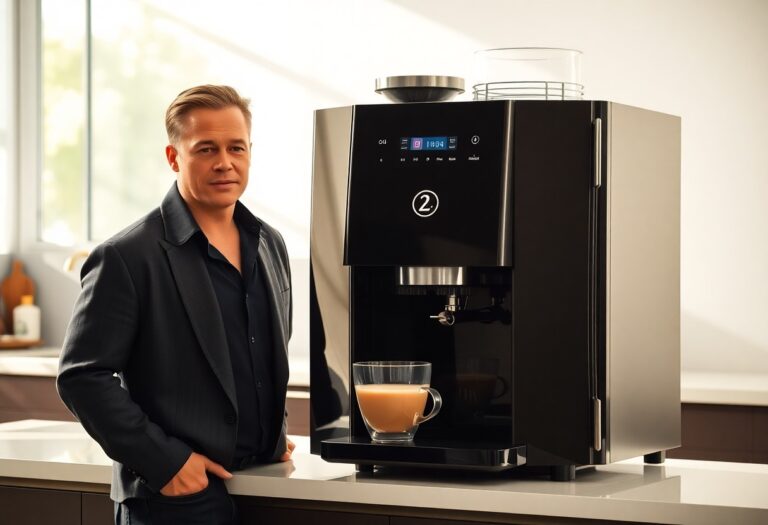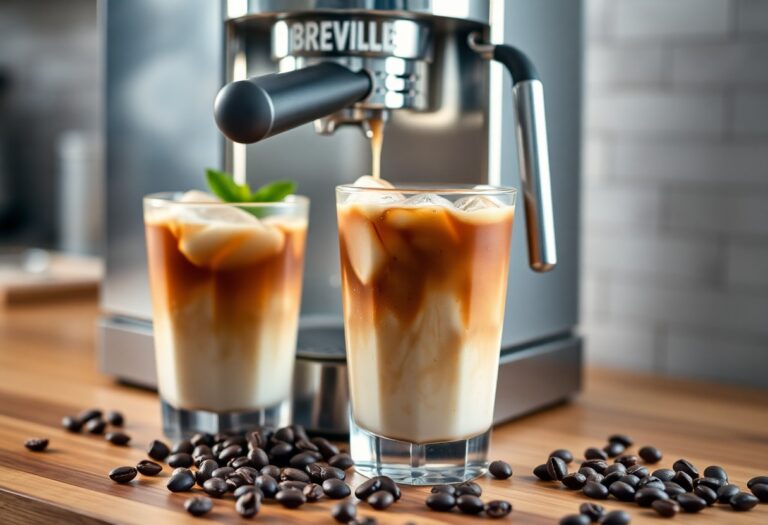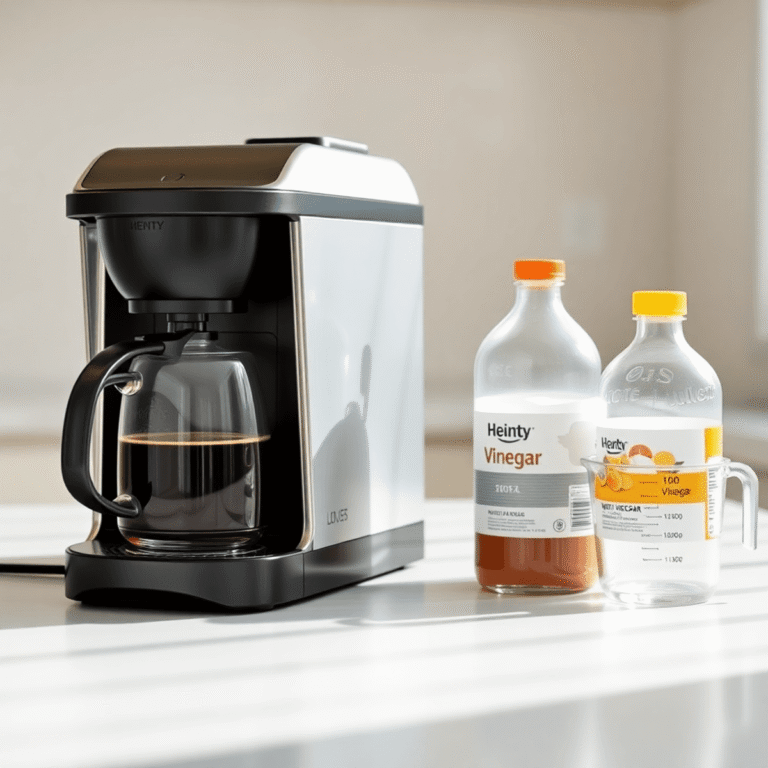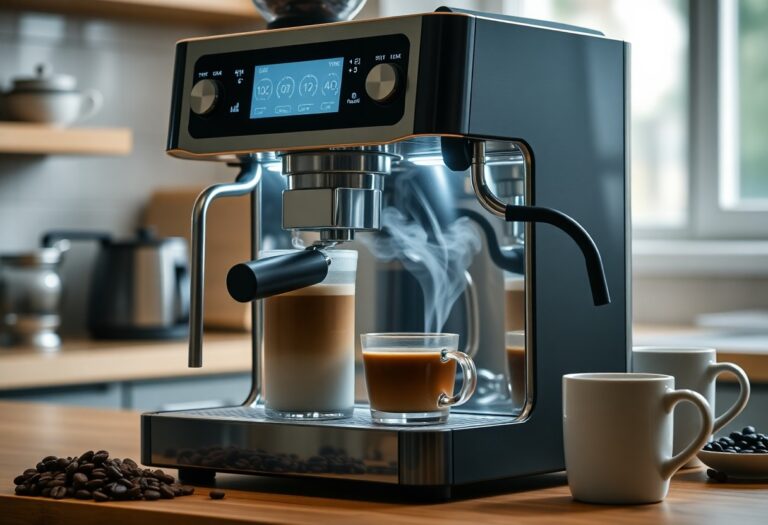What is a Coffee Machine – Basic Definition and Types
Many coffee enthusiasts find themselves wondering about the world of coffee machines and their various functions. A coffee machine is an appliance designed to brew coffee by extracting flavors from ground coffee beans. Understanding the different types of coffee machines can greatly enhance your brewing experience, allowing you to choose one that fits your lifestyle and taste preferences. In this blog post, you’ll discover the basic definition of a coffee machine and explore the most popular types available today, empowering you to make an informed decision for your morning brew.

Key Takeaways:
- A coffee machine is a device designed to brew coffee by heating water and extracting flavors from coffee grounds.
- Different types of coffee machines include drip coffee makers, espresso machines, single-serve pod machines, and French presses.
- Each type of coffee machine offers unique brewing methods, catering to various tastes and convenience needs.
- Features such as built-in grinders, programmable settings, and frothers can enhance the coffee-making experience.
- Understanding the differences between machine types aids consumers in selecting the right coffee maker for their preferences.
The Anatomy of a Coffee Machine
The components of a coffee machine come together harmoniously to create your beloved brew. Each part plays a vital role in delivering that perfect cup of coffee, making understanding their functions crucial for any coffee lover. The synergy created by these parts not only influences the flavor and aroma of the coffee but also determines the efficiency and ease of use of the machine. A closer look at its internal workings can help you appreciate your coffee experience even more.
Essential Components: What Makes It Work
Your coffee machine consists of several key components that ensure it operates efficiently. The water reservoir holds the water, while the heating element warms it to the optimal temperature. A pump is typically responsible for rapidly pushing hot water through the coffee grounds, and the brew basket holds the coffee grounds during extraction. Finally, a carafe collects the brewed coffee for your enjoyment. Together, these components harmonize to create an efficient brewing process.
The Brewing Process: From Water to Coffee
In the brewing process, the journey begins when cold water from the reservoir is heated to the ideal temperature, usually between 195°F and 205°F. Once heated, the water is pumped with precision through the coffee grounds, extracting oils and flavors efficiently. This process results in a delicious cup of coffee that you can savor, all courtesy of your machine’s intricate design.
Starting with cold water, the brewing process typically lasts between four to five minutes for most coffee machines. The combination of pressure from the pump and the correct temperature maximizes the extraction of soluble compounds from the ground coffee. These compounds include acids, sugars, and oils, all of which impart their unique flavors. If you brew coffee too quickly or too slowly, the balance of tastes can be disrupted, leading to a bitter or weak cup. Understanding this process not only enhances your appreciation for coffee machines but also elevates your home brewing skills.
Brewing Methods Unmasked: A Diverse Landscape
The world of coffee brewing offers a rich tapestry of methods, each contributing unique flavors and experiences to your cup. From straightforward appliances to intricate techniques, the variety allows for personalized exploration. Whether you value the speed of convenience or the artistry in craftsmanship, there’s a brewing method tailored to your preferences, allowing you to savor every sip without boundaries.
Drip Coffee Makers: Convenience Meets Tradition
Drip coffee makers combine ease of use with classic brewing techniques, making them a staple in many households. They allow you to prepare multiple cups at once by simply adding water and coffee grounds, leaving you free to focus on your day while the machine takes care of the brewing process.
Espresso Machines: The Art of Pressure Brewing
Espresso machines transform your coffee experience by using high pressure to extract rich flavors, resulting in a concentrated shot that serves as the foundation for a variety of coffee beverages. The precision involved in mastering an espresso machine allows baristas to draw out complex notes, creating a bold cup that is both satisfying and energizing.
Espresso machines typically operate at around 9 bars of pressure, quickly forcing hot water through finely-ground coffee. This method results in a creamy layer of crema on top, enhancing flavor and aroma. Training your skill with an espresso machine can unlock a world of drinks, from lattes to cappuccinos, transforming your home brewing into a café-like experience. Quality models range widely, so investing in one with a reliable pump and temperature control can elevate your morning routine.
French Press and Pour Over: The Manual Approach
The French press and pour-over methods emphasize a hands-on approach to brewing, letting you control every aspect of the process. With these methods, you can experiment with grind size, water temperature, and brewing time, ultimately crafting a uniquely personalized cup of coffee.
Both the French press and pour-over techniques showcase the inherent qualities of coffee beans. The French press steeps grounds in hot water for several minutes, resulting in a bold and full-bodied flavor profile. Pour-over styles, like the Chemex or V60, offer precision through manual pouring, allowing for even extraction that highlights floral and fruity notes. With practice, these techniques can yield incredible taste experiences and deepen your appreciation of coffee’s rich complexity.
Specialty Machines: Tailoring Your Coffee Experience
For those seeking to elevate their coffee ritual, specialty machines offer tailored solutions that cater to your unique preferences. From espresso machines to pour-over setups, these devices provide precise control over brewing variables, enabling you to experiment with flavor profiles and extraction methods. They invite you to become an artisan in your own kitchen, ensuring that each cup of coffee is not just a drink but a delightful experience.
Single-Serve Systems: Personalization at Its Best
Single-serve systems redefine convenience by allowing you to brew a fresh cup of coffee tailored to your taste in moments. With customizable settings for brew strength and size, these machines put you in control, enabling option variations like lattes, cappuccinos, or even flavored beverages. You can enjoy barista-quality coffee from the comfort of your home without the hassle of complex equipment.
Coffee Grinders: The Pre-Brew Essential
Coffee grinders play a significant role in your brewing process, with grind size affecting extraction and ultimately, flavor. A quality grinder ensures that your coffee beans are ground to your desired consistency, enhancing the freshness and richness of your brew. From blade to burr grinders, the choice you make can heavily influence your overall coffee experience.
Investing in a good coffee grinder can dramatically improve your coffee quality. Consistency in grind size ensures even extraction during brewing—too coarse or too fine can result in undesirable flavors. For instance, a burr grinder offers you precise control, allowing you to adjust settings based on your brewing method, whether it’s drip, French press, or espresso. Just a few moments spent grinding fresh beans right before brewing can elevate your coffee’s aroma and taste, making each sip a genuine delight.

Choosing Your Coffee Companion: Key Considerations
Your ideal coffee machine should complement your lifestyle and preferences. Think about how often you brew coffee, whether you enjoy experimenting with different brew methods, or if you just need a quick cup before heading out the door. Explore various features and what you value most, whether it’s customization, speed, or ease of use. This ensures you can make a well-informed choice that elevates your daily coffee ritual.
Budget vs. Features: Finding the Right Balance
Setting a budget plays a significant role in your coffee machine selection process. It’s about finding the right balance between cost and features that meet your needs. While you may be tempted to splurge on high-end models with advanced capabilities, it’s vital to assess what features truly enhance your coffee experience. Sometimes, a mid-range machine with vital functions can deliver quality without breaking the bank.
Space and Functionality: The Kitchen Fit Test
Before making a decision, evaluate how much space you have in your kitchen. Measure the area where you plan to keep your coffee machine and consider the machine’s dimensions, including height, width, and depth. A compact espresso maker might be suitable for small kitchens, while a larger drip coffee maker could be a fit if you frequently brew for several people. A machine that fits comfortably will encourage frequent use and ensure you enjoy your coffee without the hassle of limited counter space.
Understanding space and functionality goes beyond mere measurements. Consider how your coffee machine integrates with other kitchen appliances. If you often entertain guests, a larger model may be beneficial for brewing multiple cups quickly. On the other hand, if you prioritize versatility in brewing—like a single-serve option or the ability to brew a full pot—you can opt for models that facilitate this without taking up excessive space. Ultimately, a thoughtful kitchen fit will enhance not only the utility of your machine but also your overall coffee-making experience.
Future Trends in Coffee Machines: Innovation Ahead
The landscape of coffee machines is rapidly evolving, driven by technological advancements and changing consumer preferences. As you explore the future of coffee brewing, expect to see enhanced features like automated brewing processes, integrated app connectivity, and custom flavor profiles tailored to your individual taste. Innovations focus on convenience, efficiency, and personal experience, ensuring that your daily coffee ritual becomes even more enjoyable and satisfying.
Smart Coffee Makers: The Digital Revolution
Smart coffee makers are at the forefront of this digital revolution, allowing you to control brewing with your smartphone or voice assistant. Through Wi-Fi or Bluetooth connectivity, you can schedule brews, adjust strength, and even monitor water levels from anywhere, making your morning routine more seamless. Many models offer personalized settings and the ability to integrate with your smart home ecosystem, bringing a new level of convenience to your coffee experience.
Sustainability in Design: Eco-Friendly Options
Today’s consumers are increasingly prioritizing sustainability, and coffee machines are adapting with eco-friendly designs and features. Many brands now focus on using recyclable materials, energy-efficient brewing systems, and even sustainable sourcing of components, ensuring that your daily coffee does not come at the expense of the environment.
For instance, coffee machines equipped with energy-saving modes can significantly reduce energy consumption, while companies like Behmor and Breville offer machines made from recycled materials. Additionally, brands are implementing biodegradable coffee pods as alternatives to traditional plastic pods, addressing the mounting concerns of single-use waste. By choosing these eco-friendly options, you contribute to a positive impact on the planet while enjoying every cup of coffee.
Conclusion
With this in mind, understanding what a coffee machine is and the various types available can significantly enhance your coffee brewing experience. By exploring the differences between drip, espresso, French press, and other machines, you can choose the one that best suits your taste and lifestyle. For a comprehensive overview of different coffee makers, you can refer to the Ten Types of Coffee Makers: A Full Guide. This knowledge allows you to select the perfect coffee machine tailored to your preferences.
FAQ
Q: What is a coffee machine?
A: A coffee machine is a device that brews coffee by heating water and passing it through coffee grounds. Coffee machines come in various designs and functionalities, allowing users to prepare different types of coffee beverages, from simple brewed coffee to complex espresso drinks.
Q: What are the different types of coffee machines available?
A: There are several types of coffee machines, including:
- Drip Coffee Makers: These are the most common household coffee machines, where water drips through ground coffee in a filter.
- Espresso Machines: Designed for brewing espresso, these machines generate high pressure to extract rich flavors from finely ground coffee.
- Single-Serve Coffee Makers: These machines use coffee pods or capsules to brew one cup at a time, providing convenience and reducing waste.
- French Press: A manual brewing method that involves steeping coarse coffee grounds in hot water and then pressing a plunger to separate the grounds from the brewed coffee.
- Cold Brew Makers: These machines are designed for steeping coffee grounds in cold water over an extended period, producing a smooth and less acidic beverage.
Q: How do espresso machines differ from drip coffee makers?
A: Espresso machines use pressure to force hot water through finely ground coffee, resulting in a concentrated coffee shot known as espresso. In contrast, drip coffee makers brew coffee by allowing hot water to flow over coarser coffee grounds, resulting in a lighter and larger volume of coffee. Espresso machines are typically more complex and can include features for frothing milk, while drip coffee makers are more straightforward and user-friendly.
Q: Can I make specialty coffee drinks at home with a basic coffee machine?
A: Yes, you can make various specialty coffee drinks at home with a basic coffee machine, especially if you have a drip coffee maker or a French press. While these machines may not produce frothed milk like an espresso machine, you can still create delicious beverages by using ingredients like flavored syrups or incorporating elements like whipped cream. For more complex drinks like lattes or cappuccinos, a machine with a steam wand or a dedicated espresso machine would be beneficial.
Q: What should I consider when choosing a coffee machine?
A: When dicking out a coffee machine, consider the following factors:
- Brewing Style: Choose a machine based on the type of coffee you enjoy, whether it be drip, espresso, cold brew, etc.
- Capacity: Assess how much coffee you typically brew at once—some machines are better suited for single servings, while others can make multiple cups.
- Ease of Use: Consider your comfort level with technology; some machines have straightforward operations, while others may require more expertise.
- Budget: Coffee machines can vary significantly in price, so decide on a budget that fits your needs while considering the features you want.
- Maintenance: Look for machines that are easy to clean and maintain, as keeping your coffee maker in good condition will enhance flavor and longevity.







